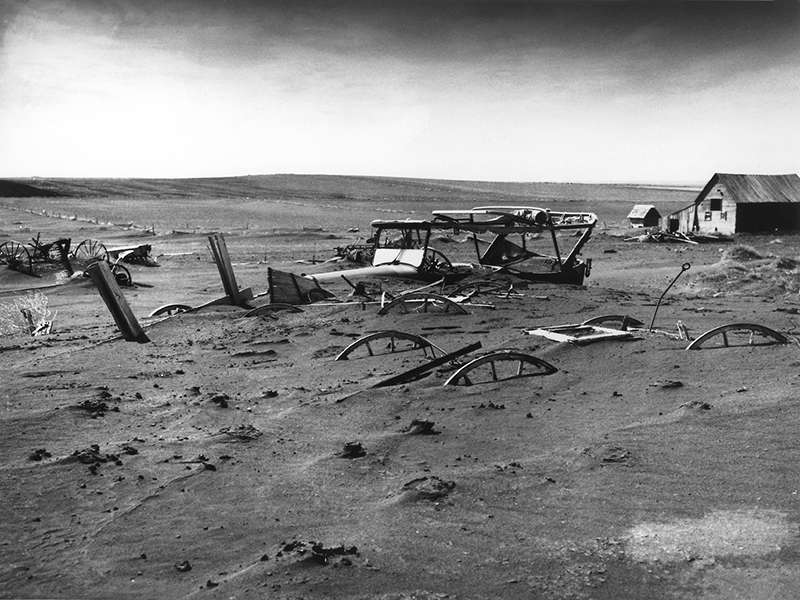Did Dust Bowl's ravages end in the 1940s? New study says no

A recent study led by the University of Tennessee, Knoxville, Goodrich Chair of Excellence Thanos Papanicolaou could very well change the way we view the health of our nation's soil, even potentially altering history books.
The paper, soon-to-be published in the Journal of Geophysical Research—Biogeosciences, focuses on modeling carbon budgets in agricultural areas.
A carbon budget is one measure of the amount of health or energy in a particular area. The study found that carbon budgets in agricultural areas fall short when compared to grasslands or forests due to human interactions.
"We took a novel approach of merging a watershed erosion model with an organic matter cycling model to build a better understanding of how sediment and nutrients are transported differently depending on topography," said Papanicolaou. "We also addressed a few major challenges such as soil texture, bulk density and the organic carbon in soil."
Papinicolaou said that the study adds a new component that captures the transport of light soils enriched in organic matter along a slope, which most current models neglect.
A professor in the Department of Civil and Environmental Engineering, Papanicolaou co-authored the report along with doctoral students Ken Wacha and Ben Abban, research faculty member Christopher Wilson, USDA-Agricultural Research Service National Lab for Agriculture and Environment Director Jerry Hatfield, the University of Iowa's Charlie Stanier, and Purdue University's Tim Filley.
They collected soil sample data to track changes in soil carbon and soil health on farms since 1930 under different farming practices.
"We set out not to go over data that had already been collected but to make new findings," said Papanicolaou. "We wanted to understand what happened to carbon levels over time, and hopefully develop some new directions for soil use out of that."
The team began with the theory that the typical method for measuring soil health—taking periodic soil cores—wasn't as effective as thought because it didn't account for variations in properties like soil type and landscape slope, or for changes in land management.
This study allowed the team to see how soils degraded because of human activity and climate.
It found that carbon storage levels varied greatly from accepted norms.
The team showed that the soils in upslope areas continued to be depleted of the rich organic matter long after the end of the Dust Bowl era because of enhanced erosion stemming from agricultural practices.
Those practices, and the erosion they caused, led to downslope areas—where many studies are conducted—having higher levels of soil health because they received nutrients washed from higher ground.
The levels of organic matter in upslope soil hit bottom in the late 1980s, right before new farm bills went into effect. But things are turning around.
The researchers say organic matter in the soil and, in some sense, overall soil health have improved. Organic matter has recovered to about half the level it was in the 1930s.
"Our study brought together hydrology, biology, geochemistry, engineering and mathematics in a way not previously done," said Papanicolaou. "We were able to show that yes, soils are improving, but the methods of farming from 1935 to 1987 have taken their toll."
The program stems from a partnership co-led by Papanicolaou and Professor Praveen Kumar from the University of Illinois, the lead institution.
Provided by University of Tennessee at Knoxville














